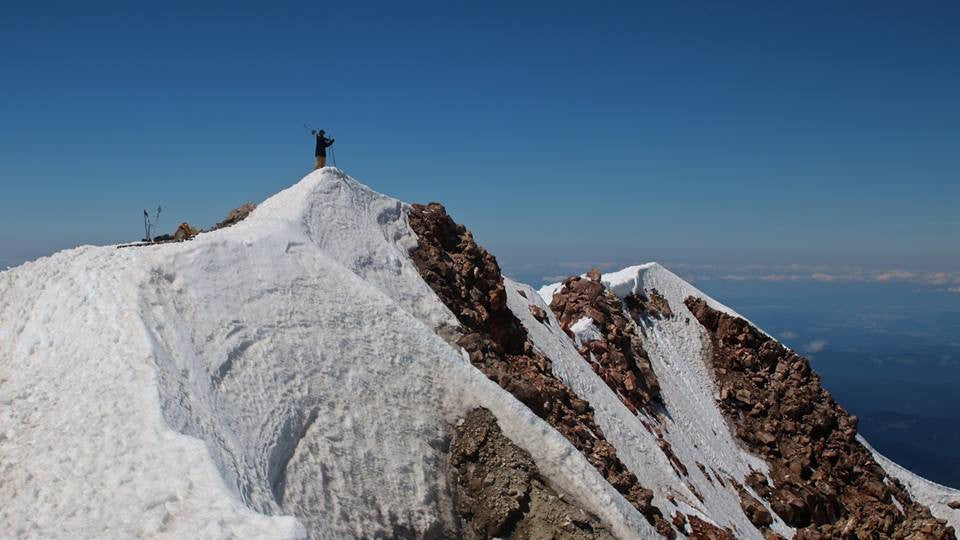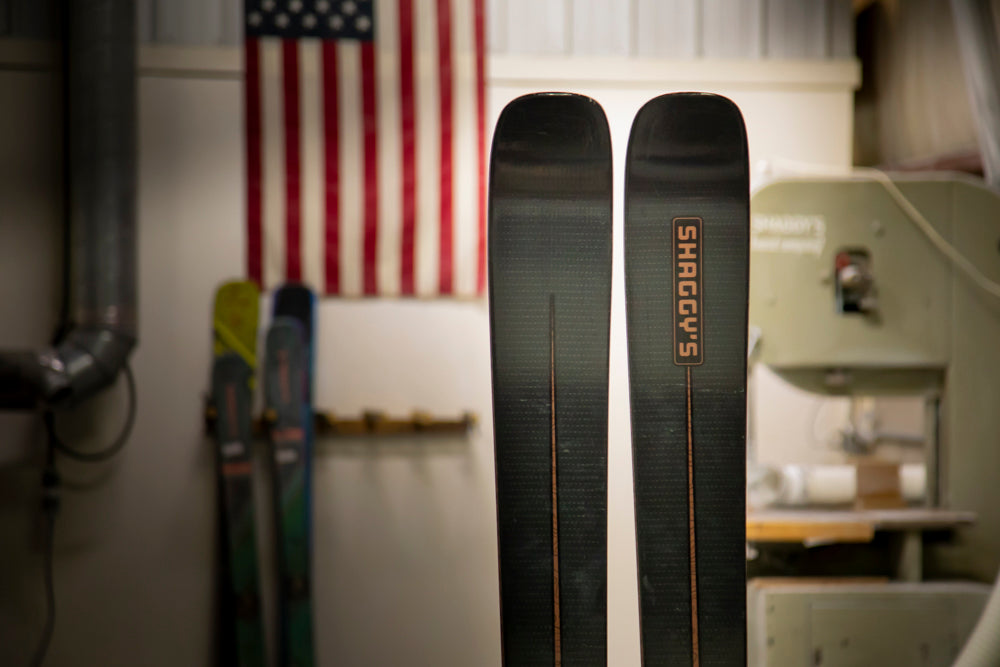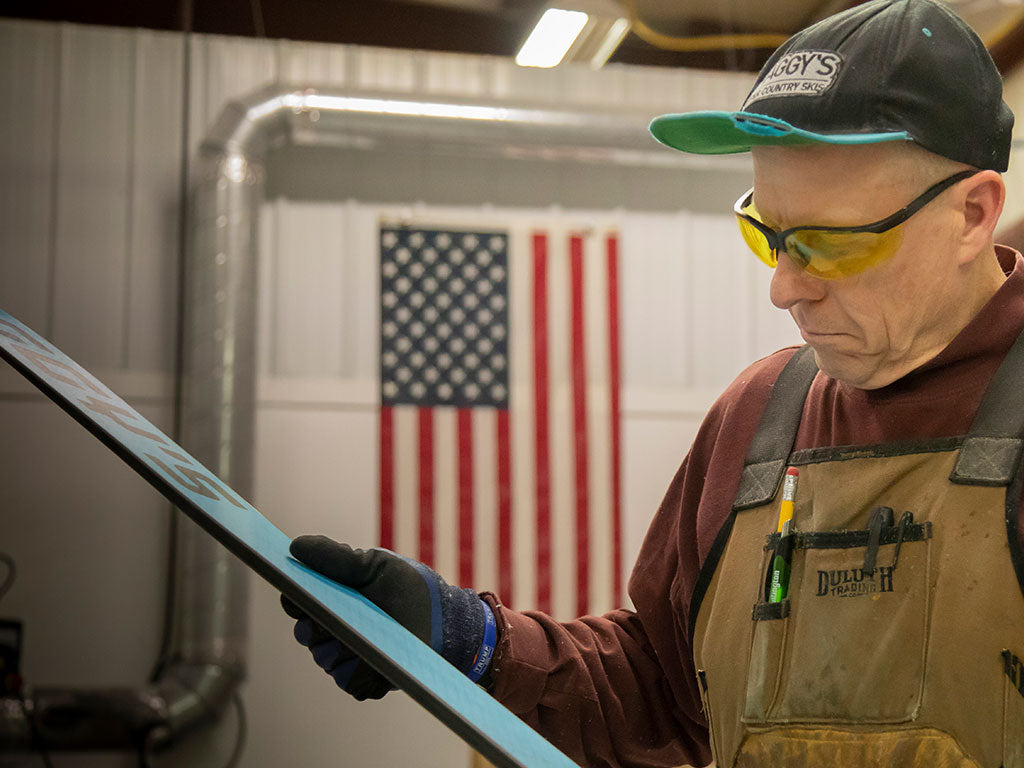
July Volcano Skiing
Skiing in July. Yes, believe it or not it’s possible, and is even some of the best skiing I have ever experienced; winter or summer. Over the past two summers I have made the migration from Michigan to the High Volcanic peaks of the Pacific Northwest, the combination of high altitude and even higher snowfall totals provide enough snow and glacial ice to ski 12 month a year.
I have been lucky enough to live on Mt. Hood working my childhood dream job at Windells Camp, a haven for summer freestyle skiing. While Mt. Hood is rightfully known for its summer park skiing and race training, the upper mountain, which towers over the ski area beneath it, also has some of the most accessible summer ski mountaineering in the world. After hearing horror stories of how steep, technical and dangerous the climb can be from friends and Mt. Hood locals, the summit became more than just a high piece of rock and ice to me, it became a goal for me. Something by which I could compare myself to all those who had climbed and skied before me, to see if I had what it took to enter the world of ski mountaineering.

After looking up at the peak with a mixture of excitement and fear for almost 2 full summers of skiing the parks below, on July 20th the stars finally aligned for a summit attempt. A coworker came through with extra Crampons and an Ice Axe, work schedules of old friends Jack Frost, Liz Finkelstein and Jennifer Abraham, who had all moved west after graduation aligned. Finally and most importantly we had a great looking weather window to attempt the summit! After several different plans, and getting woken up wayyyy too early by my climbing partners for a 2 AM alpine start, I was relieved the group decided the clear cold weather would likely keep everything frozen up late enough for a 7AM first chair palmer start. Back to Sleep for another 6 hours!
We woke back up at around 6 AM, quickly gathered all of our necessary gear, had to turn around once for my ski boots (sorry guys!) and finally arrived at Timberline Lodge at around 6:30 AM. As I filled out the necessary permits and checked in, the fact that we were really going to attempt the summit kicked in. I was a little nervous of the unknown to come, but excitement at what it would feel like to reach the top quickly drowned out any second thoughts. We rode Timberline’s lifts for about 2 miles and 3000 feet of vertical. With fresh legs at the top of the Palmer lift we began our ascent. The first part of the ascent is long and monotonous. With nothing to put how massive the formations of Mt Hood truly are into scale it sometimes felt like we were walking on a long slanted treadmill, with nothing getting any closer. Crater Rock, for example, appears to be less than a mile away from the lifts, but in reality is close to a 2 hour slog. Early in the climb we began to see tiny dots in the snow at the base of the rock. It took a few seconds to realize that these tiny dots were in fact descending climbers. A little discouraged, we trudged on, and after another hour and half with lot of feeling very out of shape and wondering why anyone would ever want to climb a mountain we reached the base of Crater Rock.

From this point on the climb began to become more technical and exposed. We threw on crampons and soon after saw the first proof that we were on an active glacier, in the mandatory crossing of a small shallow crack near the volcano’s active steam vents. We carefully crossed the crack and continued on to the top of Crater Rock and final resting point before the last steep pitch to the summit. I ended up laying down for a quick rest on my skis, and was so tired I accidentally took a quick snow nap waiting for the rest of the group to arrive. We all rested in the last flat area for around a half hour in preparation for the final and steepest pitch to come.
 By coincidence when we were about to continue on to the summit old friend and former Windells Camp Director/Ripper Chase Burch was also on a summit mission and met up with us at the staging point for the summit. After a brief rest he and I continued on with the climb. We passed glacial crevasses big enough to swallow a bus, and as quickly as possible traversed across a 40 + degree open face with lots of exposure to rock falls from above, this traverse took us to the exit of old chute, and the final pitch to the summit. The altitude and angle here of close to 40 degrees, combined with icy conditions and exposure to furmaholes (volcanic vents) below make this final pitch the most treacherous of the entire ascent. Exhausted and terrified I don’t think I have ever been more careful with my footing in my life. I was definitely glad to have borrowed crampons and an ice axe, the added traction made the climb much more comfortable and less dangerous. This final push to the summit was both terrifying and exhilarating, being able to see the finish line get closer and closer gave the necessary motivation to push through the steep icy chute.
By coincidence when we were about to continue on to the summit old friend and former Windells Camp Director/Ripper Chase Burch was also on a summit mission and met up with us at the staging point for the summit. After a brief rest he and I continued on with the climb. We passed glacial crevasses big enough to swallow a bus, and as quickly as possible traversed across a 40 + degree open face with lots of exposure to rock falls from above, this traverse took us to the exit of old chute, and the final pitch to the summit. The altitude and angle here of close to 40 degrees, combined with icy conditions and exposure to furmaholes (volcanic vents) below make this final pitch the most treacherous of the entire ascent. Exhausted and terrified I don’t think I have ever been more careful with my footing in my life. I was definitely glad to have borrowed crampons and an ice axe, the added traction made the climb much more comfortable and less dangerous. This final push to the summit was both terrifying and exhilarating, being able to see the finish line get closer and closer gave the necessary motivation to push through the steep icy chute.
 After climbing an icy face nearly as steep as a ladder for 200 yards, when I finally crested the summit ridge and got my first view of Mt. Hood’s North face, the combination of altitude, exhaustion and the scale of what I was seeing immediately took my breath away. After slogging up steep snow fields for hours, and near ice climbing a tight rime covered chute, words can’t describe the feeling of finally cresting the summit ridge and seeing the other face of the mountain for the first time. The view extended well over 100 miles around. Distant volcanoes were clearly visible and countless peaks of the Oregon and Washington Cascades poked through the spotty cloud cover.
After climbing an icy face nearly as steep as a ladder for 200 yards, when I finally crested the summit ridge and got my first view of Mt. Hood’s North face, the combination of altitude, exhaustion and the scale of what I was seeing immediately took my breath away. After slogging up steep snow fields for hours, and near ice climbing a tight rime covered chute, words can’t describe the feeling of finally cresting the summit ridge and seeing the other face of the mountain for the first time. The view extended well over 100 miles around. Distant volcanoes were clearly visible and countless peaks of the Oregon and Washington Cascades poked through the spotty cloud cover.
 After plenty of time to take in the views, drink a couple of summit sodas and rest up for the 5000+ feet of skiing to come, we geared up and began traversing a mandatory knifes edge to the top of the old chute. The traverse ended up being the scariest part of the whole climb, at around 2 feet wide with 50+ degree pitches and over a thousand feet of drop on either side, with adrenaline rushing we carefully threaded the needle to the top of old chute, and the beginning of our 5000 feet of skiing!
After plenty of time to take in the views, drink a couple of summit sodas and rest up for the 5000+ feet of skiing to come, we geared up and began traversing a mandatory knifes edge to the top of the old chute. The traverse ended up being the scariest part of the whole climb, at around 2 feet wide with 50+ degree pitches and over a thousand feet of drop on either side, with adrenaline rushing we carefully threaded the needle to the top of old chute, and the beginning of our 5000 feet of skiing!


The snow at the top had me regretting the park abuse I had given my 'Sarge 95s over the past 5 months. Rail damaged dull skis and icy, no-fall-zone chutes definitely do not go well together. The chute was fairly open and probably around a 40 degree pitch at the top. After several nerve wracking quick hop turns in the no fall zone, the chute opened up even further and the snow softened to allow for some great fast turns, edges or not, down a steep open bowl. Shouting and hand dragging the whole way we flew down the open bowl above crater rock, catching air and slashing turns on the wide open terrain. We traversed skier’s right to Hawkins ridge to avoid the active volcanic vents and exposed rocks directly down the fall line. The steepest and most chopped up face on the whole descent was around 1000 feet below the summit off the ridge. The snow here was a sketchy mixture of suncups, avalanche debris, rockfalls, and exposed crevasses. Earlier in the summer this face would have likely been the best skiing of the entire descent, after an unexpected air over a crevasse however, I was just happy to make it down in one piece without even getting a new core shot in my skis.

After dodging rocks and trying to carry as much speed as possible, we made a brief stop at Illumination Saddle. From here we continued down the mellow slope back to the top of the Palmer snowfield. We skied GS turns down the now mashed potato resort snow and finished up with a quick victory lap through the Timberline public park. Ice axe blind twos and pipe inverts were a must to finish up what had without a doubt been the best run of my life. When we finally made it to the parking lot, nothing could top the feeling of looking at the distant peak and knowing that I had been there.

My first attempt at ski mountaineering ended up being one of the most incredible experiences of my life. It was amazing to me how well the steep, tight terrain of Michigan’s Upper Peninsula prepared me for the exposed open steeps of Big Mountain riding. Climbing and skiing one of the most prominent peaks in the United States in mid-July and then skiing the longest run of my life is something I will definitely not forget anytime soon. Sometimes you just have to put yourself out there and push your limits, whatever they may be. A little bit of effort goes a long way in creating memories that last a lifetime. Wherever you are explore your terrain and always ski what you’ve got, you never know where it will take you!

Photos: Collin Rehm and Jack Frost



